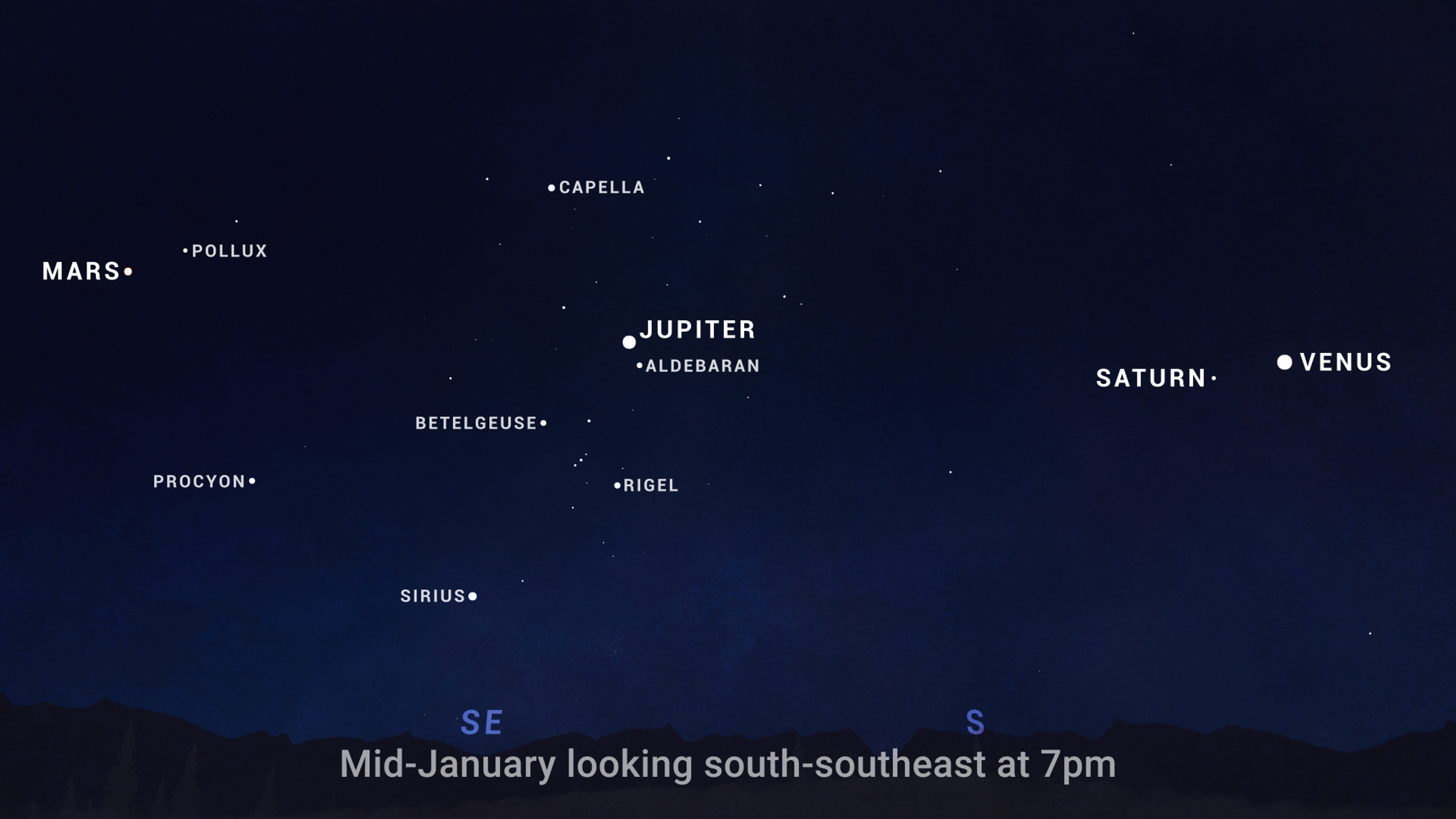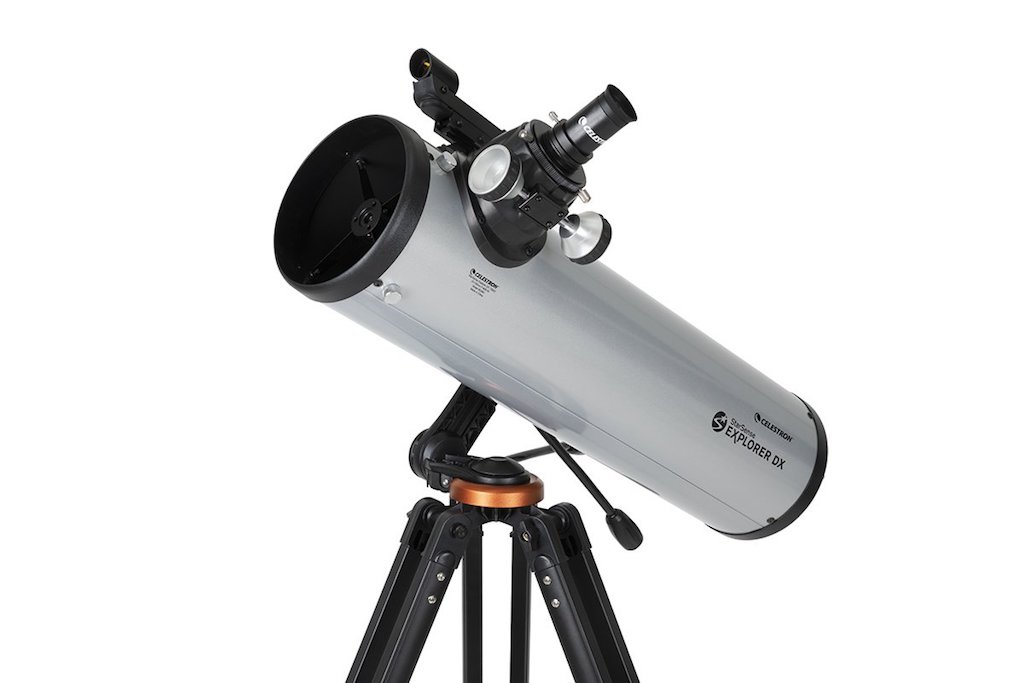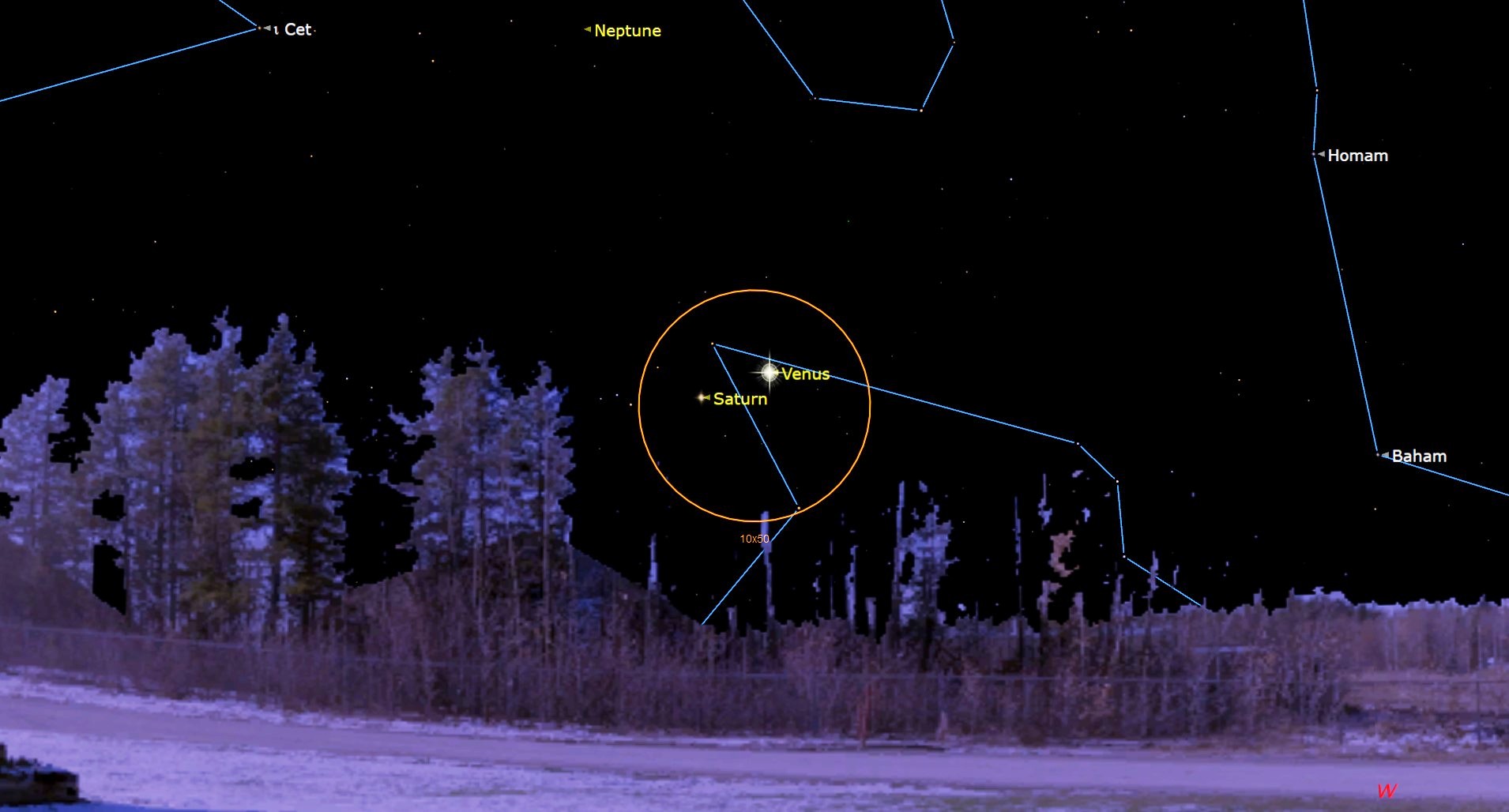How to see a 'planet parade' of 4 bright planets in January's night sky (video)
Venus, Mars, Jupiter and Saturn shine in a January planet alignment, NASA says.
Four bright planets are visible together in the night sky this month in what NASA calls a "planetary parade" that is a must-see for stargazers.
Venus, Mars, Jupiter and Saturn will each take a star turn in the night sky in January (Mars will be its closest to Earth of the year this weekend), so if you're wondering what some of the more striking bright "stars" in the sky are this month, they may actually be planets.
"In January, you'll have the opportunity to take in four bright planets in a sweeping view" said Preston Dyches of NASA's Jet Propulsion Laboratory in a video guide to January's night sky. "These multi-planet viewing opportunities aren't super rare, but they don't happen every year so it's worth checking out."


Looking for a telescope for the next night sky event? We recommend the Celestron StarSense Explorer DX 130AZ as the top pick for basic astrophotography in our best beginner's telescope guide.
All month long, Saturn and Venus will shine bright in the southwestern sky just after sunset and for the first hours of nighttime, Dyches said.
Jupiter, meanwhile, will shine bright in high in the overhead sky all night long. Mars will rise in the eastern sky during the night, and can look a ruddy red color in telescopes and binoculars. (If you're looking for gear to see the planets, check out our best telescopes guide and best binoculars overview for tips on what to use.)
While the four planets will appear to line up in the night sky, this so-called "alignment" is nothing new, Dyches said.
"While it's true that they will appear more or less along a line across the sky, that's what planets always do," he added. "That line is called the ecliptic, and it represents the planet of the solar system in which the planets orbit around the sun."
Get the Space.com Newsletter
Breaking space news, the latest updates on rocket launches, skywatching events and more!

Because the planets are all in the same relative plane, they can appear to shine close to each other from our point of view on Earth.
Venus and Saturn, for example, will appear extremely close to one another on Jan. 17 and Jan. 18 in what astronomers call a planetary conjunction. That meet up of Venus and Saturn is one of several must-see events on our night sky must-see list for January.
Venus, Mars, Jupiter and Saturn may offer dazzling views this month, but they're not the only planets in the night sky. They're just the most visible, Dyches said.
"Uranus and Neptune are there, too, technically," Dyches explained in the video. "But they don't appear as bright planets." You will need a telescope to find both gas giants in the night sky, he advised.
Editor's Note: If you snap a good photo of Venus, Mars, Saturn or Jupiter and would like to share it with Space.com's readers, send your photo(s), comments, and your name and location to spacephotos@space.com.
Join our Space Forums to keep talking space on the latest missions, night sky and more! And if you have a news tip, correction or comment, let us know at: community@space.com.

Tariq is the Editor-in-Chief of Space.com and joined the team in 2001, first as an intern and staff writer, and later as an editor. He covers human spaceflight, exploration and space science, as well as skywatching and entertainment. He became Space.com's Managing Editor in 2009 and Editor-in-Chief in 2019. Before joining Space.com, Tariq was a staff reporter for The Los Angeles Times covering education and city beats in La Habra, Fullerton and Huntington Beach. In October 2022, Tariq received the Harry Kolcum Award for excellence in space reporting from the National Space Club Florida Committee. He is also an Eagle Scout (yes, he has the Space Exploration merit badge) and went to Space Camp four times as a kid and a fifth time as an adult. He has journalism degrees from the University of Southern California and New York University. You can find Tariq at Space.com and as the co-host to the This Week In Space podcast with space historian Rod Pyle on the TWiT network. To see his latest project, you can follow Tariq on Twitter @tariqjmalik.
-
Cassandra72 There's an autocorrect error in this article. The ecliptic is the plane of planets, not the 'planet' of planets. The rest of the article is great! Thanks.Reply
